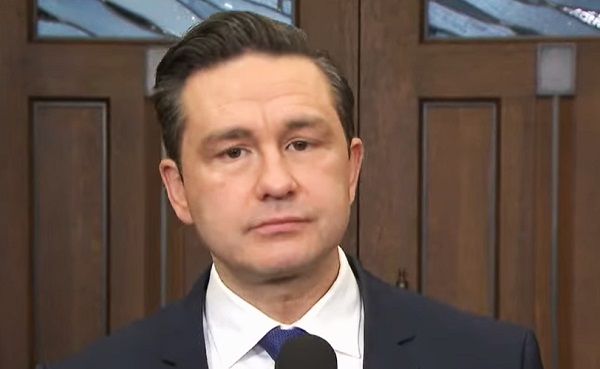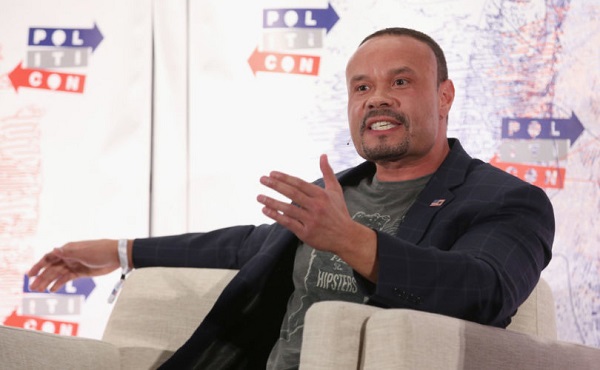International
Poilievre rebukes Trump for suggesting Canada should become 51st US state

From LifeSiteNews
The Conservative Party leader promised that the country will not be annexed by ‘economic force’ as threatened by U.S. President-elect Donald Trump.
Conservative Party of Canada leader Pierre Poilievre, and likely soon be the next Prime Minister, said the nation will “never” become a U.S. “state” in a firm rebuke to U.S. President-elect Donald Trump, who threatened to annex Canada by “economic force.”
In a statement posted Tuesday to X, Poilievre shot back at Trump’s loose remarks that Canada would become the 51st state, saying he will “put Canada first.”
“Canada will never be the 51st state. Period. We are a great and independent country,” Poilievre wrote in his statement.
“We are a great and independent country. We are the best friend to the U.S. We spent billions of dollars and hundreds of lives helping Americans retaliate against Al-Qaeda’s 9/11 attacks. We supply the U.S. with billions of dollars of high-quality and totally reliable energy well below market prices. We buy hundreds of billions of dollars of American goods.”
Poilievre added that when it comes to Canada on the world stage being perceived as weak, it’s due to “Our weak and pathetic NDP-Liberal government has failed to make these obvious points.”
“I will fight for Canada. When I am Prime Minister, we will rebuild our military and take back control of the border to secure both Canada and the U.S. We will take back control of our Arctic to keep Russia and China out,” he wrote.
Trump, speaking Tuesday from Mar-a-Lago, said rather brazenly he was considering using “economic force” to make Canada the 51st U.S. state.
He claimed that there is a $200 billion trade deficit between Canada and the U.S. regarding spending on “subsidies” and the fact the U.S. military is there to also “protect Canada.”
Trump’s remarks set off a firestorm of commentary on X from leftist and right-leaning Canadians alike.
However, Canadians are firmly opposed to the idea of their nation ever becoming a new U.S. state. A recent poll show that Canadians overwhelmingly reject the idea of Canada ever becoming the “51st state” as Trump said. In total, 82 percent are opposed to the idea, with 13 percent being in favor.
Prime Minister Justin Trudeau, who announced Monday that he intends to resign as Liberal Party leader and thus PM, had this to say regarding Trump’s comments.
“There isn’t a snowball’s chance in hell that Canada would become part of the United States. Workers and communities in both our countries benefit from being each other’s biggest trading and security partner,” he wrote Tuesday on X.
As for Trudeau, he was approved by Governor General Mary Simon to prorogue parliament until March 24. This means, for the time being, he is still serving as PM, but all parliamentary business has been stopped.
The Liberal Party will now hold a leadership race to choose a new leader, who will by default become Canada’s next Prime Minister.
Crime
‘We’re Going To Lose’: Steve Bannon Warns Withholding Epstein Files Would Doom GOP


From the Daily Caller News Foundation
By Jason Cohen
Former White House adviser Steve Bannon warned on Friday that Republicans would suffer major losses if President Donald Trump’s administration does not move to release documents related to deceased pedophile Jeffrey Epstein’s crimes and associations.
Axios reported on Sunday that a two-page memo showed the Department Of Justice (DOJ) and FBI found no evidence Epstein kept a “client list” or was murdered, but public doubts have continued. Bannon said on “Bannon’s War Room” that failure to release information would lead to the dissipation of one-tenth of the Make America Great Again (MAGA) movement and significant losses for the Republican Party in the 2026 midterms and the 2028 presidential election.
Dear Readers:
As a nonprofit, we are dependent on the generosity of our readers.
Please consider making a small donation of any amount here.
Thank you!
“It’s not about just a pedophile ring and all that, it’s about who governs us, right? And that’s why it’s not going to go away … For this to go away, you’re going to lose 10% of the MAGA movement,” Bannon said. “If we lose 10% of the MAGA movement right now, we’re going to lose 40 seats in ’26, we’re going to lose the [presidency]. They don’t even have to steal it, which they’re going to try to do in ’28, because they’re going to sit there and they go, ‘They’ve disheartened the hardest-core populist nationalists’ — that’s always been who governs us.”
Bannon also demanded the publication of all the Epstein documents on “Bannon’s War Room” Thursday. He called on the DOJ to go to court and push for the release of the documents or for Trump to appoint a special counsel to manage the publication.
Epstein was arrested in 2019 and charged with sex trafficking. Shortly after, he was found dead in his New York Metropolitan Correctional Center cell shortly after. Officials asserted that he hanged himself in his cell.
However, Epstein’s death has sparked years of theories because of the malfunctioning of prison cameras, along with guards admitting to falsifying documents about checking on the then-inmate. The DOJ inspector general later confirmed that multiple surveillance cameras outside of his cell were inoperable, while others captured the common area outside his door.
Both Bannon and Daily Caller News Foundation co-founder Tucker Carlson have speculated that Epstein had connections to intelligence agencies.
Former Labor Secretary Alex Acosta allegedly indicated that Epstein was tied to intelligence, according to Vicky Ward in The Daily Beast.
espionage
FBI’s Dan Bongino may resign after dispute about Epstein files with Pam Bondi

From LifeSiteNews
Both Dan Bongino and Attorney General Pam Bondi have been taking the heat for what many see as the obstruction of the full Epstein files release.
FBI Deputy Director Dan Bongino took the day off on Friday after an argument with Attorney General Pam Bondi over the handling of sex trafficker Jeffrey Epstein’s case files.
One source close to Bongino told Axios that “he ain’t coming back.” Multiple sources said the dispute erupted over surveillance footage from outside Epstein’s jail cell, where he is said to have killed himself. Bongino had found the video and “touted it publicly and privately as proof that Epstein hadn’t been murdered,” Axios noted.
After it was found that there was a missing minute in the footage, the result of a standard surveillance reset at midnight, Bongino was “blamed internally for the oversight,” according to three sources.
Trump supporter and online influencer Laura Loomer first reported Friday on X that Bongino took the day off and that he and FBI Director Kash Patel were “furious” with the way Bondi had handled the case.
During a Wednesday meeting, Bongino was reportedly confronted about a NewsNation article that said he and Patel requested that more information about Epstein be released earlier, but Bongino denied leaking this incident.
“Pam said her piece. Dan said his piece. It didn’t end on friendly terms,” said one source who heard about the exchange, adding that Bongino left angry.
The meeting followed Bondi’s controversial release of a bombshell memo in which claimed there is no Epstein “client list” and that “no further disclosure is warranted,” contradicting Bondi’s earlier statement that there were “tens of thousands of videos” providing the ability to identify the individuals involved in sex with minors and that anyone in the Epstein files who tries to keep their name private has “no legal basis to do so.”
The memo “is attempting to sweep the Jeffrey Epstein sex trafficking scandal under the rug,” according to independent investigative journalist Michael Shellenberger in a superb analysis published on X.
“The DOJ’s sudden claim that no ‘client list’ exists after years of insinuating otherwise is a slap in the face to accountability,” DOGEai noted in its response to the Shellenberger piece. “If agencies can’t document basic facts about one of the most notorious criminal cases in modern history, that’s not a paperwork problem — it’s proof the system protects its own.”
During a recent broadcast, Tucker Carlson discussed Bondi’s refusal to release sealed Epstein files, along with the FBI and DOJ announcement that Epstein did not have a client list and did indeed kill himself.
Carlson offered the theory that U.S. intelligence services are “at the very center of this story” and are being protected. His guest, Saagar Enjeti, agreed. “That’s the most obvious ,” Enjeti said, referencing past CIA-linked pedophilia cases. He noted the agency had avoided prosecutions for fear suspects would reveal “sources and methods” in court.
Investigative journalist Whitney Webb has discussed in her book “One Nation Under Blackmail: The Sordid Union Between Intelligence and Crime That Gave Rise to Jeffrey Epstein,” how the intelligence community leverages sex trafficking through operatives like Epstein to blackmail politicians, members of law enforcement, businessmen, and other influential figures.
Just one example of evidence of this, according to Webb, is former U.S. Secretary of Labor and U.S. Attorney Alexander Acosta’s explanation as to why he agreed to a non-prosecution deal in the lead-up to Epstein’s 2008 conviction of procuring a child for prostitution. Acosta told Trump transition team interviewers that he was told that Epstein “belonged to intelligence,” adding that he was told to “leave it alone,” The Daily Beast reported.
While Epstein himself never stood trial, as he allegedly committed suicide while under “suicide watch” in his jail cell in 2019, many have questioned the suicide and whether the well-connected financier was actually murdered as part of a cover-up.
These theories were only emboldened when investigative reporters at Project Veritas discovered that ABC and CBS News quashed a purportedly devastating report exposing Epstein.
-

 Bruce Dowbiggin2 days ago
Bruce Dowbiggin2 days agoThe Covid 19 Disaster: When Do We Get The Apologies?
-

 Crime1 day ago
Crime1 day agoSweeping Boston Indictment Points to Vast Chinese Narco-Smuggling and Illegal Alien Labor Plot via Mexican Border
-

 Alberta2 days ago
Alberta2 days agoAlberta school boards required to meet new standards for school library materials with regard to sexual content
-

 International20 hours ago
International20 hours agoSupport for the Ukraine war continues because no one elected is actually in charge.
-

 Business20 hours ago
Business20 hours agoTrump slaps Brazil with tariffs over social media censorship
-

 Environment1 day ago
Environment1 day agoEPA releases report on chemtrails, climate manipulation
-

 Business24 hours ago
Business24 hours agoCBC six-figure salaries soar
-

 Addictions23 hours ago
Addictions23 hours agoCan addiction be predicted—and prevented?



